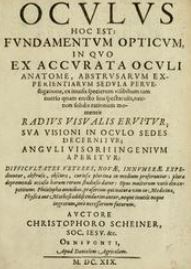 As last year, my list of medical anniversaries in 2019 is restricted to those that are multiples of 50 years. Thus, I have not included, for example, the 10th anniversary of the 2009 outbreak of swine flu in the UK or the launching of the National Pandemic Flu Service in the same year, leading to increased availability of antiviral medicines that reportedly have little efficacy; the opening of the Princess of Wales of the Landmark Aids Centre in London in 1989; or the strike of UK ambulance crew members, also in 1989.
As last year, my list of medical anniversaries in 2019 is restricted to those that are multiples of 50 years. Thus, I have not included, for example, the 10th anniversary of the 2009 outbreak of swine flu in the UK or the launching of the National Pandemic Flu Service in the same year, leading to increased availability of antiviral medicines that reportedly have little efficacy; the opening of the Princess of Wales of the Landmark Aids Centre in London in 1989; or the strike of UK ambulance crew members, also in 1989.
The anniversary list includes the following topics:
- chemistry (phosphorus; the periodic law of the elements);
- physiology and biochemistry (Tractatus de Corde; Oculus; Schilling test);
- surgery (the first excision of a hip);
- anatomy (Purkinje cells; the islets of Langerhans);
- new institutions (the Foundling Hospital in Florence);
- clinical medicine (Traité de l’auscultation mediate; Cushing’s disease; Prader–Willi syndrome; Sturge–Weber syndrome)
- infection and immunology (Nobel Prizes);
- genetics (Hereditary Genius).
For me, the highlight is Dmitri Mendeleev’s description of the periodic law of the elements.
Mendeleev (1834–1907) began writing his book Osnovyi khimii (Principles of Chemistry) in 1868, and looked for a way to classify the elements. Various schemes had been proposed. Division, for example, into metals and non-metals. But two way classifications are rarely satisfactory; some elements, for example, such as phosphorus, which also features in this year’s anniversaries, could exist in both metallic and non-metallic forms. Another method was based on the differences between basic and acidic oxides, but the existence of transitional forms made that also unsatisfactory. Electrochemical classification raised other problems and did not lead to continuity from compound to compound. Classifications based on the relative affinities of elements for each other and their valencies were no better.
Mendeleev sought a universal characteristic that would allow him to arrange the elements in a strict order. That characteristic, he decided, was the atomic weight, which led him to enunciate his periodic law:
- The elements, if arranged according to their atomic weights, show clear periodicity of properties.
- Elements that are similar in chemical properties have atomic weights that are either nearly the same (platinum, iridium, osmium) or that increase uniformly (potassium, rubidium, caesium).
- The arrangement of the elements or groups of elements in order of atomic weight corresponds to their so-called valencies.
- The most widely distributed elements in nature have small atomic weights, and all elements of small atomic weight have sharply defined properties.
- The atomic weight determines the character of an element.
- Discovery of many as yet unknown elements can be expected; for instance, elements analogous to aluminium and silicon, whose atomic weights would be between 65 and 75.
- The atomic weight of an element may sometimes be corrected by knowing the weights of adjacent elements.
- Some characteristic properties of elements can be predicted from their atomic weights.
Mendeleev outlined his ideas in a pamphlet, An attempted system of the elements, based on their atomic wrights and analogies, which he distributed privately at the start of 1869. He presented his ideas to the Russian Chemical Society in March of that year, in a talk titled “On the correlation of the properties and atomic weights of the elements”, which he published in the Society’s journal later that year.
It was on this basis that the periodic table of the elements was developed.
Some medical anniversaries in 2019
1419
Filippo Brunelleschi, commissioned by the Arte della Seta, designs the Spedale degli Innocenti (the Foundling Hospital) in Florence
1619
Christoph Scheiner publishes Oculus:
“Hoc est: fundamentum opticum …”

1669
Robert Boyle (left) and Hennig Brand (right) independently discover phosphorus

1669
Richard Lower publishes Tractatus de Corde in which he observes that the change in the colour of the blood as it passes through the lungs is brought about by the air

1769
Carl Wilhelm Scheele (1742-86; left) and Johan Gottlieb Gahn (1745-1818; right) find phosphorus in bones [The name “Scheele’s green”, hydrated copper arsenite, was first introduced, according to the OED, in 1819]
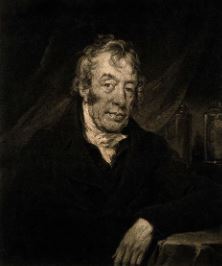
1769
Charles White (1728-1813) performs the first excision of a hip
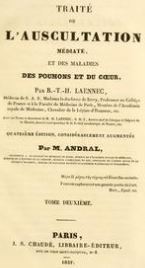
1819
René Laennec describes the stethoscope in his Traité de l’auscultation médiate
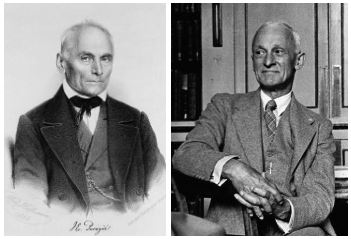
1869
Jan Evangelista Purkyně (Purkinje cells) dies;
Harvey Williams Cushing (Cushing’s disease) is born
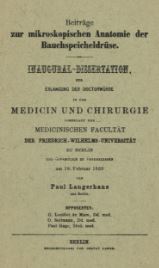
1869
Paul Langerhans discovers islets in the pancreas, as described in his inaugural dissertation at the Berlin Pathological Institute, Beiträge zur mikroscopischen Anatomie der Bauchspeicheldrüse
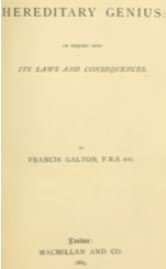
1869
Francis Galton publishes Hereditary Genius: “I propose to show in this book that a man’s natural abilities are derived by inheritance, under exactly the same limitations as are the form and physical features of the whole organic world.”
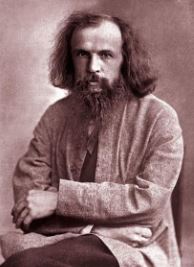
1869
Dmitri Mendeleev describes the periodic law of the elements at a meeting of the Russian Chemical Society, “On the correlation between the properties of the elements and their atomic weights.”
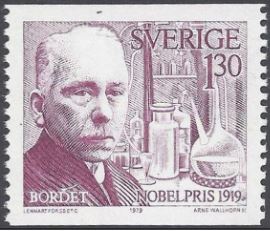
1919
Jules Jean Baptiste Vincent Bordet (1870–1961) is awarded the Nobel Prize for Physiology or Medicine, “for his discoveries relating to immunity”; he receives it in 1920
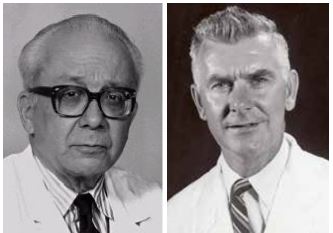
1919
Births: Andrea Prader (Prader-Willi syndrome; left), Robert F Schilling (Schilling test for absorption of vitamin B12; right)
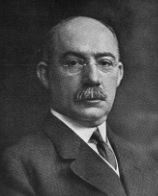
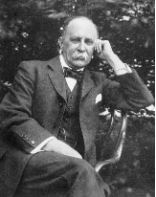
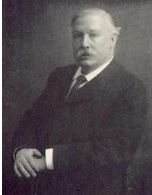
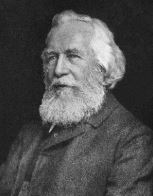
1919
Deaths (left to right): Henry L Gantt (Gantt chart); William Osler; William Allen Sturge (Sturge-Weber syndrome; Ernst Haeckel
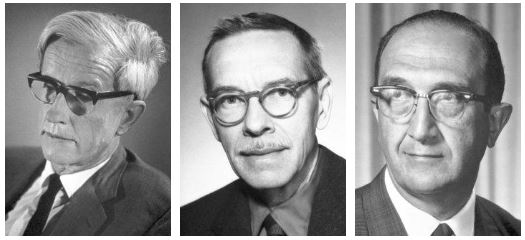
1969
Nobel Prize in Physiology or Medicine: Max Delbruck, Alfred D Hershey, Salvador Luria, “for their discoveries concerning the replication mechanism and the genetic structure of viruses”
Lexicographic anniversaries in 2019
These medical words were first recorded, according to the Oxford English Dictionary, in the listed years (the numbers in parentheses are the total numbers of new words in the indicated years). Antedatings are always possible.
Note that “autosomal dominant” was first recorded in 1919, while “autosomal recessive” had appeared a year earlier.
Note also the large number of new drug names that appeared in 1969, at a time when drug discovery was flourishing.
1569 (260)
aconite
alchemistry (= alchemy)
anatomist
carbuncled
druggard (a drug addict)
ebrious (drunk)
scatomancy (diagnosis from the faeces)
uromancy (diagnosis from the urine)
1619 (259)
chordal (of the chorda tympani)
naeve (naevus)
risus sardonicus
splenic
tympanum
1669 (383)
embolus
gingival
idiopathic
incus
paresis
pneumonic
pulmonary
rachitis (rickets)
1719 (166)
antiphthisical
borborygm
osteogeny/osteography
psychostatics
tubercular
1769 (287)
anal
social science
1819 (670)
body-snatching
emetine
haematin
Hunterian
laughing gas
mucocele
noseology [sic]
strychnine
1869 (689)
anthraquinone
apomorphia
carcinosis (= carcinomatosis)
caseate
gliosarcoma
haemoglobin
leprosarium
os hyoideum
oxyhaemoglobin
parosteal
presystole
psychiatrist
rheumatologist
strabismometer
xanthoma
1919 (348)
androgenic
autosomal dominant
Goodpasture’s stain
herniorrhaphy
meningococcaemia
monkey gland
neuroanatomist
paraphrenic
phenobarbital
sadomasochism
semilogarithmic
thymoma
Weil–Felix reaction
1969 (376)
abdominoplasty
Adriamycin
allozyme
amyloidogenic
biosurgery
clonidine
daunorubicin
gamolenic acid
immunodeficiency
immunosuppress
itai-itai
levamisole
lorazepam
mannosidosis
medevac
mevinphos
mycotoxicity
myonecrotic
nalbuphine
neonaticide
neuropathologically
nifurtimox
oncogene
parasuicide
perhexilene
pizotifen
practolol
salbutamol
sucralfate
somatotroph
sotalol
telemedicine
tranexamic acid
tubulin
vitrectomy
xenotransplant
Jeffrey Aronson is a clinical pharmacologist, working in the Centre for Evidence Based Medicine in Oxford’s Nuffield Department of Primary Care Health Sciences. He is also president emeritus of the British Pharmacological Society.
Competing interests: None declared.


